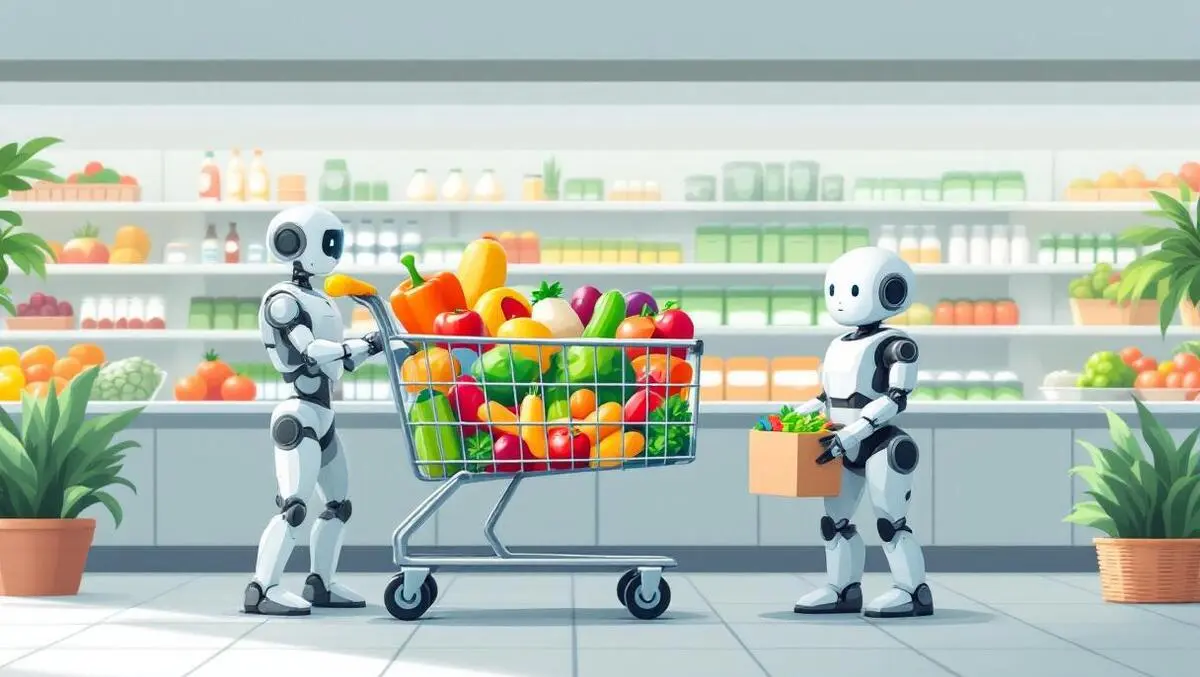
AI, loyalty and ANZ grocery retailers: What’s new
How grocery retailers can drive profits, increase engagement and consolidate customers in 2025/2026
In recent times, the Australian and New Zealand grocery marketplace has faced its fair share of ups and downs, challenges and opportunities. In this region we've seen supply chain interruptions, shortages, increasing costs, consumer price sensitivities and regulatory scrutiny against the backdrop of global market uncertainty and rapid advancements in digital technologies, particularly concerning AI and automation.
As discussed in Eagle Eye's latest grocers' ebook, Loyalty Lessons That Will Shape 2025, there are now a number of exemplary grocery loyalty programs that have set themselves apart from others. These programs master the fundamentals of loyalty with forward-thinking approaches and advanced, purposebuilt technology, along with the latest AI innovations.
Personalisation and AI delivering striking results
Personalisation has been an enduring goal for grocers, and for good reason. It's a path to delighting customers, encouraging engagement, and driving financial performance. Personalisation also allows grocers to allocate their marketing and promotional spending more efficiently, only presenting discounts on certain items to those customers most likely to be motivated by that discount. This kind of targeting represents a level of precision that mass marketing can't achieve.
Grocery retailers have a unique advantage here, given the vast amount of data generated by the extensive volume of SKUs in their inventory and the frequency of customer visits. And if they have a loyalty program, they have all the data they need to tailor offers to customers at the individual level.
Boston Consulting Group (BCG) estimates that personalisation leaders will experience US$570 billion in global growth by 2030. However, the impact of personalisation is not limited to projections; several well-recognised grocers are seeing significant financial returns from advanced personalisation strategies.
UK supermarket chain Tesco delivers personalised customer experiences through its massively popular Clubcard program. Tesco's latest trading statement reports that there are more than 23 million Clubcard households in the UK and that Clubcard sales penetration was 82% in the UK and 87% in Central Europe. There are also 16.3 million Tesco app users, with visits to the app increasing year-over-year.
This volume of digitally connected customers allowed Tesco to launch a high performing, high-engagement personalisation initiative driven by gamification: Clubcard Challenges. This program offers customer personalised, goal-oriented challenges over six week campaigns, with points rewards offered for completing challenges like spending £20 on certain line or range of products over the period.
Clubcard Challenges uses AI to create bespoke thresholds for each participant, drawn from insights into that customer's past purchase history and preferences, which are then analysed and processed by predictive AI algorithms.
The campaign's performance results are striking. During the final, Christmas-themed Challenges campaign of 2024, 10 million customers received their own personalised set of Clubcard Challenges. Of all customers who visited the Clubcard Challenges site or pages, 76% converted into players. Sixty-two percent of all players reached the first reward threshold, becoming winners. Those winners collected over half a billion extra Clubcard points over the campaign period.
During 2024, Tesco's H1 24/25 overall adjusted operating profit increased 15.6% over 2023 to £1.649 billion.
ANZ grocery retailers needs to adapt, innovate and embrace AI
The ANZ grocery sector's tight competition and changing conditions require retailers to constantly adapt their approach. What worked last year may not succeed today. Companies must take learnings from recent challenges in supply chains, stock management, pricing structures, customer price sensitivity and regulatory oversight to navigate 2025 effectively.
While modern, AI-driven personalisation, gamification and omnichannel engagement are transforming grocery loyalty globally, these approaches represent somewhat untapped opportunities in the Australian and New Zealand markets. While the true-personalisation sector is still young, ANZ retailers that implement such strategies could create a compelling advantage.
In addition to reflecting on the ebb and flow of challenges and opportunities that retailers have already experienced over the past several years, the key messages grocery retailers need to pay attention to concern the profitability of personalisation when backed with robust data and smart execution.
The execution of loyalty in modern ANZ retail combines data, personalisation and strategy in increasingly sophisticated ways. Grocery brands with a solid grasp on these elements can widen the gap between themselves and competitors who haven't evolved their approach.
The best grocery loyalty programs today understand that personalisation is now an engine of bottom-line results. They know that gamification as an end to itself has diminishing returns, but when executed with a purpose, it can be an incredibly valuable and ROI-delivering tool.
The top players also recognise that the impact of any omnichannel loyalty initiative is directly proportionate to the volume of customers that participate in its digital channels. More eyeballs equals more engagement, bigger baskets and bigger media opportunity.
Australian and New Zealand grocery brands that apply these lessons across 2025/2026 could make a real difference. Success, as ever, will rest on focusing on programs that customers find valuable, practical, engaging and effective.
Read more insights in Eagle Eye's latest grocers' ebook, Loyalty Lessons That Will Shape 2025.

